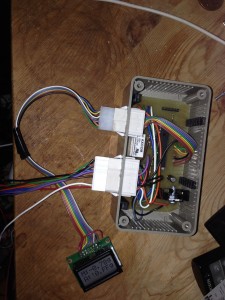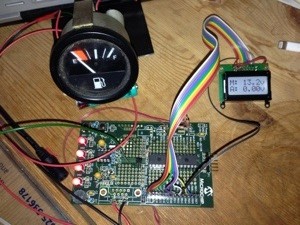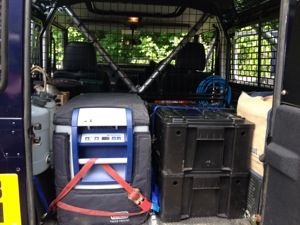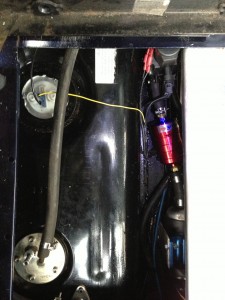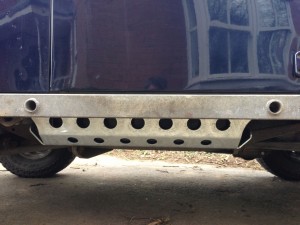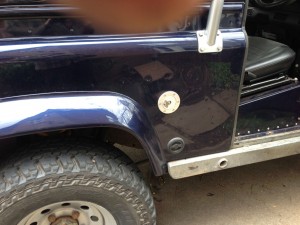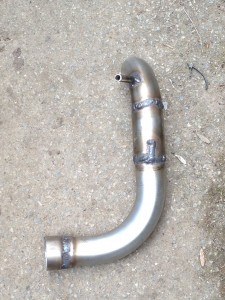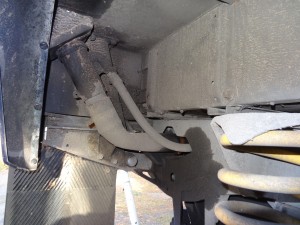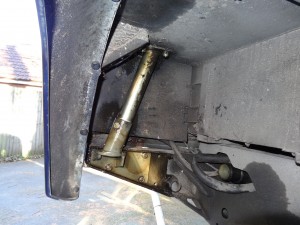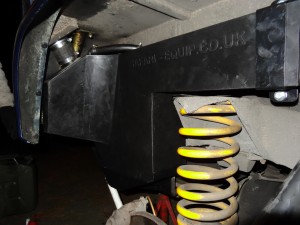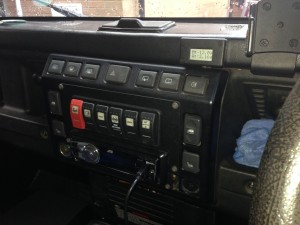 Both the front and rear propshafts have been on the “hit list” for a while due to the amount of play in the splines. On my competition motor I fitted a Bailey Morris heavy duty prop shaft after snapping a rear one and decided it was worth the extra money for the quality of the splines and the larger UJs so decided to go the same way with the 90. 2 propshafts along with 2 spare UJs for the spares kit arrived last week.
Both the front and rear propshafts have been on the “hit list” for a while due to the amount of play in the splines. On my competition motor I fitted a Bailey Morris heavy duty prop shaft after snapping a rear one and decided it was worth the extra money for the quality of the splines and the larger UJs so decided to go the same way with the 90. 2 propshafts along with 2 spare UJs for the spares kit arrived last week.
So, I ticked off a few jobs in the end this weekend – I added a foam rubber strip between the tyre rack and the roll cage at the front as it was whistling quite loudly above 40mph, all quiet now. I also fitted both new propshafts, fitted a new steering damper with relocation bracket to the steering drag link – removing the one from the track rod. In an effort to fix the annoying slight oil leak from somewhere around the transfer box I took the bottom plate off it and resealed it while changing the oil. I had a play with a number of ideas to try and mount the ground anchor somewhere and decided in the end it really is too cumbersome to fit in a 90 !
Sunday was spent doing a final fit and gauge calibration for the infamous battery and fuel monitor, in the afternoon we took it for a long run out to make sure the props and steering felt good and that the fuel gauge and fuel consumption was something like. All seemed good, the new propshafts have fixed the vibration we were getting on overrun, the steering wobble is completely gone and the spare tyre rack was quiet at all speeds 🙂
Just to prove that the battery/fuel gauge thing is actually fitted and working at last I even took a picture of it ! It sits quite neatly above the normal centre dash switches…

